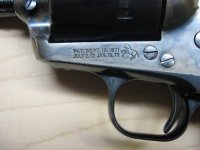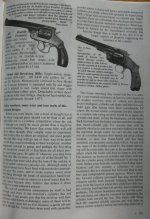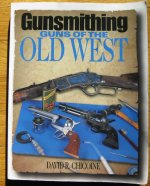rhmc24
Absent Comrade
This concerns the big frame top break DAs, mostly .44 caliber. They were made from about 1881 and sold up to around 1913. It is said that all the frames were made before 1899. That reason is cited in the widely held belief that they are all to be considered 'blackpowder only".
I am seeking documentation or source information that establishes the fact whether a 'smokeless ban' should be accepted as warranted.
Background as I see it is that Colt's change to smokeless was around 1892 generally accepted as visible on pistols with the change in base pin retainer. S&W would be as interested as Colt in keeping up with the times. In 1890s big shift to smokeless was going on in rifle cartridges in Winchester and US Krag for example.
S&W had the best big bore DA revolver for a while but in the mid-90s probably saw the writing on the wall and fell far behind Colt in early 1900s when the the New Service came on the scene. The old top break DA was their only big bore revolver. Only around 1908 when S&W offered the New Century (triple lock) were they really able to compete. I will much appreciate any authoritative documentation offered, likewise serious commentary or critique is sought.
I am seeking documentation or source information that establishes the fact whether a 'smokeless ban' should be accepted as warranted.
Background as I see it is that Colt's change to smokeless was around 1892 generally accepted as visible on pistols with the change in base pin retainer. S&W would be as interested as Colt in keeping up with the times. In 1890s big shift to smokeless was going on in rifle cartridges in Winchester and US Krag for example.
S&W had the best big bore DA revolver for a while but in the mid-90s probably saw the writing on the wall and fell far behind Colt in early 1900s when the the New Service came on the scene. The old top break DA was their only big bore revolver. Only around 1908 when S&W offered the New Century (triple lock) were they really able to compete. I will much appreciate any authoritative documentation offered, likewise serious commentary or critique is sought.
Last edited:



